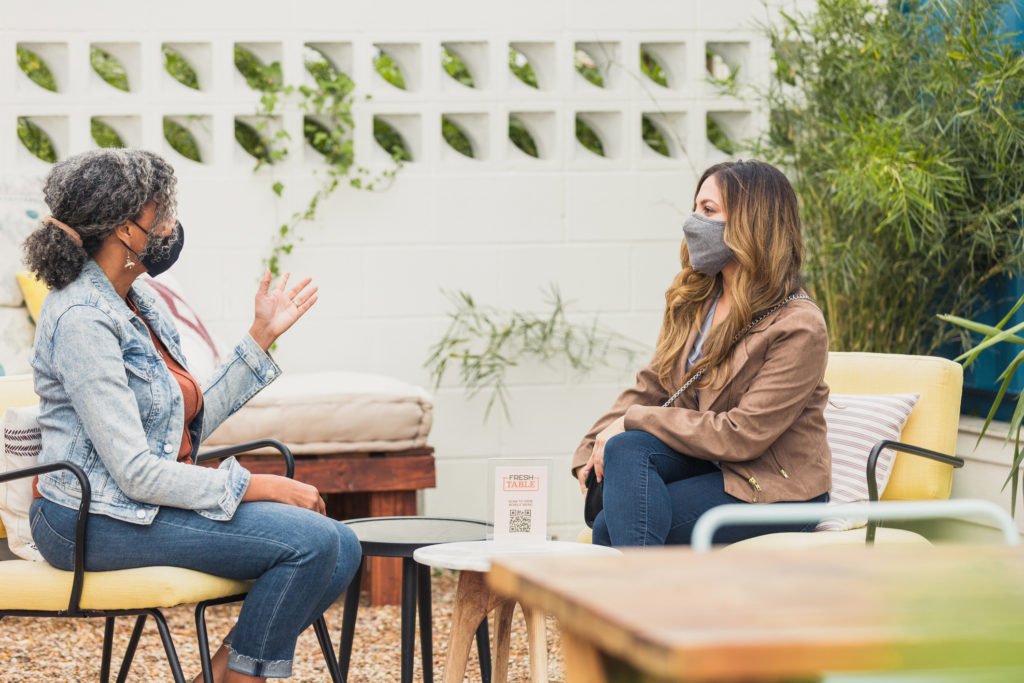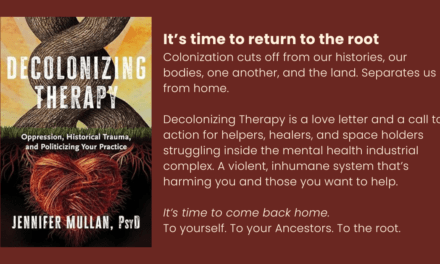The headlines are consistent in the message they carry – anti-vaxxers are to blame for the pandemic’s resurgence, and they are putting others in harm’s way. A recent op-ed in the New York Times suggested higher insurance premiums for the unvaccinated. We have tried many strategies to convince them, from the million-dollar lottery to free beer to do-it-for-your-grandma approach. Presumably, these individuals have doctors — and they haven’t listened to medical advice either. Even more alarming is the steady increase in Covid-19 pediatric cases. According to a report from the American Academy of Pediatrics, as of August 12, over 4.41 million children have tested positive for Covid-19 since the onset of the pandemic. More than 121,000 new child cases were reported between August 5 and August 12. Clearly, a different approach is needed.
A Different Way of Looking at the Current Situation
In the book Crossing Cultures: Insights from Master Teachers, J. M. Bennett argues that it is possible to boil a frog in a pot of hot water, provided you turn the heat up very slowly. If you turn the heat up too rapidly, the frog jumps out.
I argue we can use the same metaphor to connect with anti-vaxxers — as long we approach the issue gradually. We need to start by meeting them where they are. In other words, we need to challenge them, but we need to do it in a supportive way.
The Developmental Model of Intercultural Sensitivity[1] (DMIS) is a widely-known theoretical framework that is often used to explain how individuals perceive and deal with differences. The framework is organized along a continuum as depicted in the figure below.
|
Ethnocentric Stages Difference Avoiders |
Ethnorelative Stages Difference Seekers |
||||||
|
|
Note: This is a visual representation of the model presented in Bennett (1998) and Bennett (2003).
These six different stages are a good predictor of how individuals respond to differences — be it nationality, religion, race, sexual orientation, ability, culture, etc. It is beyond the scope of this piece to go into details about each of the stages. In fact, if you Google DMIS, you will find all the information you need to familiarize yourself with this framework. For the purposes of this writing, I will focus on the defense stage, which is where I suspect most individuals fall as it relates to vaccine issues.
Individuals in the defense stage approach situations from an ethnocentric perspective. They believe they have the right answers and are very critical of different perspectives. Sounds familiar? In fact, these individuals are not only threatened by differences, but they also have a clear “us vs. them” way of thinking. In other words, they believe they are right and that everybody else is in the wrong.
What if we approached the conversation with the intent to learn from each other?
Most individuals approach anti-vaxxers with the intent of proving them wrong, which, so far, has proven to be an abysmal failure. The current strategy has been to win the argument, much as if we were in a debate. If you will recall, the point of a debate is to prove the other person is wrong. There is one right answer and you have it. We listen intently to find flaws in their reasoning so that we can prove our point.
Most individuals approach anti-vaxxers w/the intent of proving them wrong and winning an argument, which has proven to be an abysmal failure. What if we approached the conversation with the intent to learn from each other? Share on XWhat if we approached the situation with the intent of learning each other’s perspective? For that to happen, we need to discard the combative communication patterns we have been using and instead, listen to gain a deeper understanding and to add to a common pool of knowledge. We need to stop debating anti-vaxxers and start dialoguing with them.
We need to discard the combative communication patterns we're using and instead, listen to gain a deeper understanding and add to a common pool of knowledge. We need to stop debating anti-vaxxers and start dialoguing. Share on XAccording to the Intergroup Dialogue program at the University of Michigan, in a dialogue, both parties grow. It assumes that many people have possible answers and that only together a solution can be found. Dialogue is about listening intently in search of a common ground. We cannot forget the fact that we only know part of the truth, and it is only when we are all able to share our individual truths that a full picture will transpire. A dialogue, then, is about sharing our individual perspectives and experiences so we can see the whole picture[2]. Only then will we be able to close the existing divide.
Finding Common Ground in Order to Address Fears and Misinformation
The only way for us to move forward is to create safe spaces where both groups can explore their commonalities. I am certain these will be very difficult conversations; however, finding things you can agree on should be the first step when working with individuals in the defense stage. For example, all of us want our children to be safe, all of us would love to stop wearing masks, all of us want to enjoy public spaces without the fear of getting sick, etc. By starting with shared goals, both groups can move from an adversarial position (i.e., the us vs. them positioning) to start finding issues they have in common.
All of us want our children to be safe, to stop wearing masks, to enjoy public spaces without fear of getting sick. By starting w/ shared goals, we can move from an adversarial position to start finding issues we have in common. Share on XIn addition to finding shared interests, it is also important to address individuals’ fears and concerns. Below is an adaptation of an activity I have used when conducting D&I training (which often invokes a lot of fear in participants), and also when preparing groups to travel abroad. The suggested steps are as follows:
- Create two areas and label them “fears” and “hopes.” If holding the meeting via Zoom, the whiteboard feature could be used for participants to share their thoughts.
- Give participants two different colors of Post-it notes. Colored markers and an appropriate writing space such as a white board would work as well.
- If using Post-it notes, tell them to use one color to write down their fears about the vaccine or the worst thing that will happen to them if they take the vaccine. On the other, they should write down their hopes for how the situation could improve.
- After they have listed their fears and hopes, tell them to place each note in their designated areas in the room.
- As this point, you, or a co-facilitator, should review the content of the Post-it notes and group them by category. For example, you may find that some of the comments may relate to “vaccine safety” (e.g., The vaccine is not safe because it was made too fast). Another category may be “side effects” (e.g., I will die from the side effects; it will change my DNA.), yet another could be “resentment of governments mandates” (e.g., We live in a democracy, the government should not tell us what to do.)
- The next step then is to address all their concerns, fears, and misinformation, one category at a time.
Here, more than ever, a dialogue about the different concerns needs to take place. This is not the time to prove who is wrong and who is right. This is about learning about the different perspectives, so you have a better idea of where individuals are coming from. Remember, the key is to move away from the “us vs. them” mentality toward a shared common ground.
I would also suggest you facilitate these conversations with an in-group community leader such as a church leader, a school official, a community activist, or even a local business leader. Very likely, these individuals already have an established relationship with your target audience, and this will facilitate the process tremendously.
Finally, when facilitating these difficult conversations, it is also important that you keep in mind the “Yes, And…Rule.[3]” Observing this rule during the facilitation process allows multiple things to be true at the same time. More importantly, it allows you to disagree without discounting someone else’s reality. It also encourages participants to bring their truth to the conversation. In fact, this rule creates a healthier dynamic because when you say to someone, “Yes, and…” it translates into “I hear you. I see what you’re saying. I would like to hear more.”
Seeing more people vaccinated in this country — and around the world — is personal to me. I lost my brother to Covid, and I have experienced, firsthand, the devastation of having to grieve over a loved one from afar. However, going back to the metaphor I used in the beginning, forcing a frog into a pot of boiling water will not work. We need more opportunities for dialogue, so we can understand each other’s truth. We need to stop proving how wrong anti-vaxxers are. Instead, we need to listen more, place less blame, address fears and misconceptions, and, above all, move forward from what we have in common — our humanity.
We need to listen more, place less blame, address fears and misconceptions, and, above all, move forward from what we have in common—our humanity. Share on X
[1] Bennet, Milton J. “Intercultural Communication: A Current Perspective.” In Basic Concepts Of Intercultural Communication: Selected Readings, edited by Milton J. Bennet, 1-34, Yarmouth: Intercultural Press, 1998.
[2] Kaplowitz, Donna Rich; Griffin, Shayla Reese; Seyka, Sheri. (2019). Race Dialogues: A Facilitator’s Guide to Tackling the Elephant in the Classroom (p. 185). Teachers College Press.
[3] Killermann, Sam; Bolger, Meg. Unlocking the Magic of Facilitation: 11 Key Concepts You Didn’t Know You Didn’t Know (p. 60). Impetus Books. Kindle Edition.




















